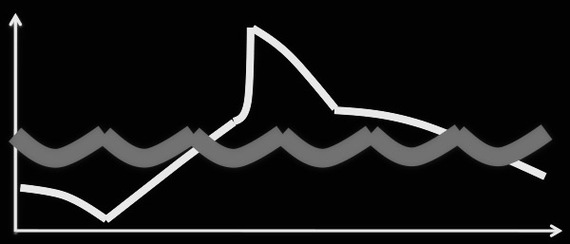What do shark sightings; startup failure and data analytics have in common?
Well, if your name is Mike or Peter your chances of encountering a shark are much higher than if your name is Jonas. So, do sharks have a preference for those named Mike or Peter or are there simply fewer surfers named Jonas?
Biased sampling and jumping to conclusions can fool even the smartest among us. There is a big difference between the correlation of events moving in concert and events that merely influence each other.
As an example, there is a strong correlation between the number of nesting storks in Denmark and the number of newborn babies. However, one cannot conclude that these storks bring the babies from Egypt from this one fact.
Even when events are shown to influence each other, how can one really know which event influenced the other and if the events are statistically significant. Even events such as higher temperatures and soft drink consumption can be hard to prove.
Ventures, especially new entrepreneurial ventures and startups, rely on new big reliable insights to create breakthrough innovative offerings. However, all too often they are fooled by randomness and burn precious cash before they can realize their error and pivot, if they ever realize it at all.
Business Analytics of Small and Big Data is an artful science, requiring logic as well as intuition. This is especially true when it comes to creating insights that can inspire breakthrough innovation and not just simple A/B split testing, such as, should the site have a blue or green background. Below is a seven-step Design Science Research approach to systematically developing rigorous insights that work.
1) Generating Big Ideas from fundamental meanings
The founders or their development team meet in multiple sessions over a short period of time (weeks) to generate Whys for the ventures by exploring a proven taxonomy of meanings.
2) Qualitative expert interviews
Using an open-ended interview guide, experts are consulted in the domains from which the startup is considering synthesizing knowledge, to create a breakthrough innovative new venture.
3) Brainstorming concepts business concepts
Applying standard brainstorming, invite experts to generate criteria for success, criteria for concepts and create a new venture concept addressing Why, How and What. The experts then select the most promising concepts with which to proceed.
4) Qualitative crowdsourcing, using a range of diverse social networks.
The new venture concepts are presented in a wide range of forums to gather feedback and, more importantly, to uncover biases, such as Pro-Innovation Bias, Curse of Knowledge Bias and Stereotyping.
5) Co-creating a hypothesis and plan for quantitative and qualitative data gathering
Critical assumptions behind the new venture are listed and approaches devised for testing.
6) Data collection
Quantitative data collection, supplemented with qualitative control questions/data to make sure research team and/or interviewee are clear on what is being measured and understand the use of the measuring scale(s).
7) Data analysis
Standard statistics are applied, such as correlations and comparing means/averages. Unexpected results require extra attention, since they can reveal poor procedures, true insights or simply be random occurrences and outliers.
Since the Greeks found no value in testing their models, for two thousand years, we all believed that light and heavy objects fell at different speeds. Now we cannot wait that long!
Now, however, established and new ventures in particular, can achieve immense competitive advantages by the application of scientific methods, such as Design Science Research, to discover and validate their big ideas. They can address the Why - How - What of their venture without spending another two thousand years before discovering their best road forward.
